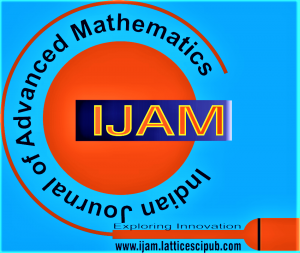![]()
An Elementary Chapter in Number Theory: Proof of Fermat’s Last Theorem
P. N. Seetharaman
P.N. Seetharaman, Retired Executive Engineer, Energy Conservation Cell, Tamil Nadu State Electricity Board, Anna Salai, Chennai (Tamil Nadu), India.
Manuscript received on 11 September 2025 | First Revised Manuscript received on 16 September 2025 | Second Revised Manuscript received on 23 September 2025 | Manuscript Accepted on 15 October 2025 | Manuscript published on 30 October 2025 | PP: 63-69 | Volume-5 Issue-2, October 2025 | Retrieval Number: 100.1/ijam.B121705021025 | DOI: 10.54105/ijam.B1217.05021025
Open Access | Editorial and Publishing Policies | Cite | Zenodo | OJS | Indexing and Abstracting
© The Authors. Published by Lattice Science Publication (LSP). This is an open-access article under the CC-BY-NC-ND license (http://creativecommons.org/licenses/by-nc-nd/4.0/)
Abstract: Pierre de Fermat first stated around 1637 that for any integer n > 2, the equation an + bn = cn has no positive integer solutions, and he said the theorem in the margin of a copy of Arithmetica. His proof is available only for the equation a4 + b4 = c4 for the exponent n = 4. Subsequently, Euler proved the theorem in the equation a3 + b3 = c3 for the exponent n = 3. Taking the above two proofs of Fermat and Euler, it would suffice to prove the theorem for n = p, where p is any prime > 3. In this proof, we hypothesize all r, s and t as positive integerssatisfying the equation rp + sp = tp and establish a contradiction. We use another auxiliary equation, x3 + y3 = z3, and combine the two equations using transformation equations. Solving the transformation equations, we establish a contradiction, thereby proving the theorem.
Keywords: Transformation Equations. Mathematics Subject Classification: 2010: 11A–XX.
Scope of the Article: Applied Mathematics
